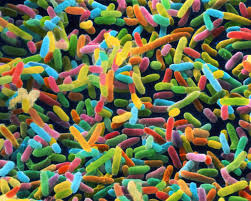When Sara Campbell first typed “exercise and microbiome” into PubMed in 2010 and hit enter, “the search literally said zero,” she tells The Scientist. Campbell was just beginning an assistant professorship in exercise science at Rutgers University. Being an athlete herself and having studied cholesterol metabolism and exercise and diet during her PhD and postdoc, she started to wonder if exercise could influence the microbes in the gut.
“We know that exercise does all of these incredible things,” Campbell says, such as keeping inflammation down and enhancing antioxidant defenses. And so she thought, “well, if there’s symbiosis and mutualism that go on between the host and the microbes, there has to be something going on . . . something changing about the microbes” during exercise. When her PubMed search came up empty, she decided: “I’ve got to study this.”
Teaming up with microbiologists and toxicologists from Rutgers and a pathologist from Oklahoma City, Campbell designed an experiment to analyze fecal samples of male mice fed a normal or high-fat diet for 12 weeks. Some of the mice in each group were allowed to exercise, while the others remained sedentary. Physical activity, the results showed, generated a unique microbiome in the guts of the mice, independent of the animals’ diet: specifically, the mice that exercised hosted Faecalibacterium, Clostridium, and Allobaculum, while the sedentary mice did not. The high-fat diet also caused inflammation in the guts of the sedentary mice, which was not seen in the mice that ate the fatty diet and exercised.







